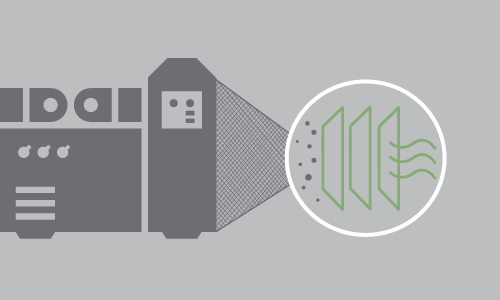The reduction of air pollution has become one of the biggest global talking points for several decades. World leaders have held a great deal of meetings with the sole purpose of addressing environmental pollution. These have led to established entities like the EPA, which is now in charge of monitoring and regulating air pollution emissions in the US.
Although current emissions are much lower than the last 5 decades, a significant amount of pollution enters our atmosphere on a daily basis. These include dangerous compounds like hazardous air pollutants, which have harmful effects on the general public health and the environment.
In this article, we will go over the definition of hazardous air pollutants. We’ll also discuss the different destruction mechanisms that can help break down these compounds before they enter the atmosphere.
What are HAPs?
In simple terms, hazardous air pollutants are contaminants that are known or suspected of causing cancer and other serious health complications. Also known as HAPs, these compounds can come from a variety of sources, with industrial facilities being among the most common origins.
The health effects of Hazardous Air Pollutants
Studies show that HAPs can have a detrimental effect on the human body. At the same time, these research projects also highlight the impact that industries such as paint manufacturing can have on our health. Some of the negative effects associated with increased exposure to HAPs include, but are not limited to:
- Increased risk of cancer
- Damage to the immune system
- Reduced fertility
- Neurological problems
- Respiratory conditions
Environmental setbacks associated with HAPs
Similarly to humans, animals and plants also experience negative health effects when exposed to high levels of hazardous air pollutants. Destroying HAPs can help improve public health, but it can also have a positive impact on animal and plant wildlife.
HAPs such as benzene, mercury, and methylene chloride can enter the ecosystem in different ways, which include:
- Soil and Water Deposits: Chemicals like mercury sit on the surface of soil and water deposit. They are eventually absorbed by either the soil or liquid and are then transported to animals and plants via ingestion.
- Animals and The Food Chain: Wild animals make their way into our food chain in one way or another. For instance, consuming beef that has been fed with contaminated grains or grass can result in dangerous conditions for both animals and humans.
How to destroy hazardous air pollutions from industrial operations
Industrial operations are responsible for a large portion of the HAPs that enter our atmosphere. For this reason, the EPA has set strict regulations to which paint manufacturers and other facilities must adhere. These regulations often require companies to destroy HAPs before they enter the atmosphere and discuss some of the best mechanisms to do so.
Some of these include:
Catalytic Oxidizers
Catalytic oxidizers are ideal for operations that release a large volume of HAPs at relatively low temperatures. These use a combination of precious metal catalysts and elevated temperatures to destroy HAPs, breaking them down into harmless by-products before releasing them into the atmosphere.
Regenerative Thermal Oxidizers
Regenerative thermal oxidizers, known as RTOs, rely solely on high temperatures to destroy hazardous air pollutants. The high temperatures break down HAPs into water vapor, carbon dioxide, and heat before releasing them into the environment.
Find a Reliable Manufacturer Today!
Get in touch with The CMM Group and our team will be happy to discuss the best HAP abatement mechanism for your company!




